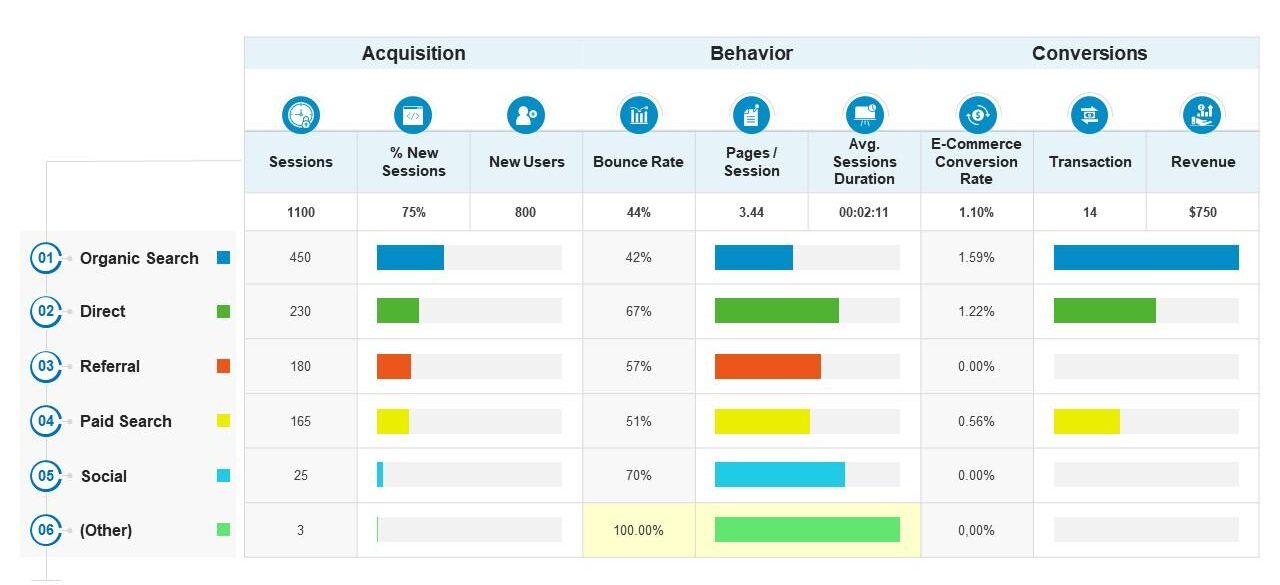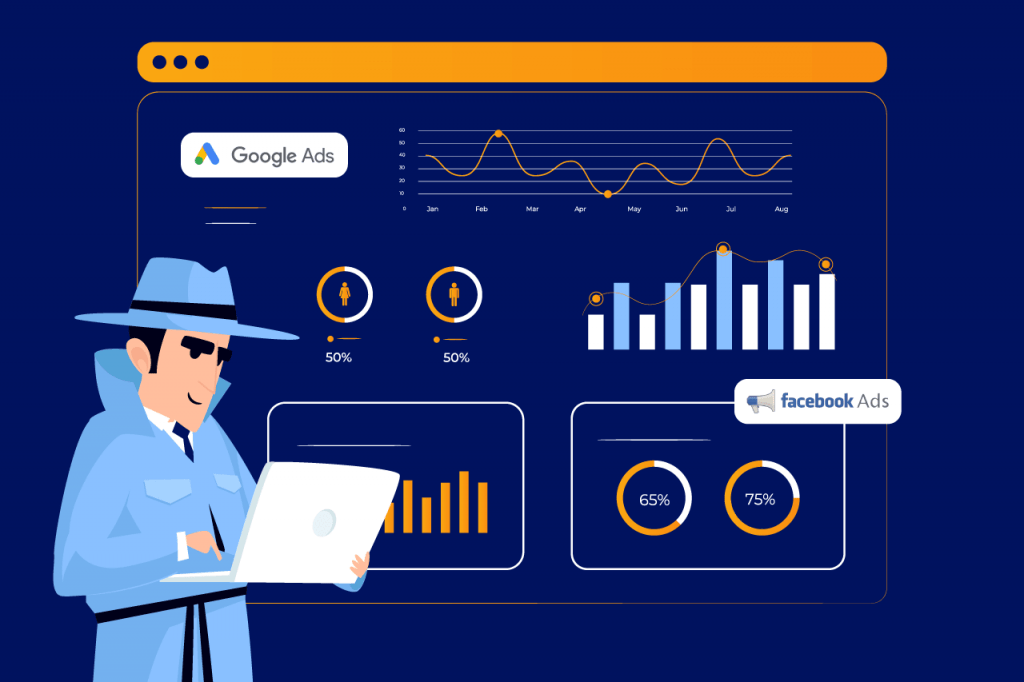In today’s digital age, advertising has become a crucial component of any successful marketing strategy. With the increasing number of channels available for advertising, it has become essential for businesses to analyze their campaigns effectively. This article will provide insights into how to analyze advertising campaigns, helping you make data-driven decisions to optimize your marketing efforts and achieve better results.
How To Analyze Advertising Campaigns

Analyzing advertising campaigns is essential for several reasons. It allows you to measure the effectiveness of your campaigns, identify areas for improvement, and make informed decisions to maximize your return on investment (ROI). By analyzing your campaigns, you can gain valuable insights into consumer behavior, preferences, and trends, helping you refine your targeting and messaging strategies.
Setting Clear Goals
Before analyzing your advertising campaigns, it’s crucial to establish clear goals. What do you want to achieve through your advertising efforts? Are you looking to increase brand awareness, generate leads, or drive conversions? Setting specific and measurable goals will provide a framework for your analysis and allow you to assess whether your campaigns are successful in meeting those objectives.
Defining Key Performance Indicators (KPIs)
To effectively analyze your advertising campaigns, you need to define key performance indicators (KPIs) that align with your goals. KPIs can include metrics such as click-through rates (CTRs), conversion rates, cost per acquisition (CPA), return on ad spend (ROAS), and customer lifetime value (CLV). By tracking these metrics, you can assess the performance of your campaigns and identify areas that require optimization.
Tracking Metrics
Once you have established your goals and defined KPIs, it’s time to start tracking the relevant metrics. Utilize tracking tools and analytics platforms to monitor the performance of your campaigns. Track metrics in real time or set up regular reporting to gain insights into the effectiveness of your advertisements.
Analyzing Data
Data analysis is a critical step in understanding the performance of your advertising campaigns. Dive deep into the data to identify patterns, trends, and correlations. Look for demographic information, geographic targeting effectiveness, time of day or week performance variations, and any other data points that can provide valuable insights. Analyzing the data will help you make data-driven decisions and optimize your campaigns accordingly.
Identifying Success Factors
During the analysis process, identify the factors contributing to the success or failure of your campaigns. Is it the creative elements, the targeting strategy, or the messaging? By identifying the success factors, you can replicate them in future campaigns and improve your overall marketing performance.
Optimizing Campaigns
Based on your analysis and identified success factors, optimize your advertising campaigns. Make necessary adjustments to your targeting, creative assets, ad placements, or bidding strategies to improve performance. A/B testing can also be an effective method to identify the most effective variations of your ads and landing pages.
Leveraging Analytics Tools
To streamline your analysis process, leverage analytics tools such as Google Analytics, Facebook Ads Manager, or other platforms specific to your advertising channels. These tools provide detailed insights into campaign performance, audience demographics, user behavior, and conversion tracking. Utilize the data and reports generated by these tools to gain a comprehensive understanding of your campaigns.
Monitoring Competitors
Analyzing your competitors’ advertising campaigns can provide valuable insights and help you stay ahead in the competitive landscape. Monitor their strategies, messaging, targeting, and offers to identify opportunities or gaps in the market. Stay updated on industry trends and adapt your campaigns accordingly.
Adapting to Market Trends
The advertising landscape is constantly evolving. Stay informed about market trends, consumer preferences, and emerging advertising platforms. Experiment with new channels and strategies to ensure your campaigns remain relevant and effective. By adapting to market trends, you can seize new opportunities and gain a competitive edge.
Case Studies with Record-Breaking Campaigns
1. Nike’s “Just Do It” Campaign: A Lesson in Emotional Storytelling
Nike’s iconic “Just Do It” campaign revamped the brand’s image and created an emotional connection with its audience. By leveraging stories of perseverance and determination, Nike saw a 31% increase in worldwide sales in the campaign’s first year. Analyzing the factors behind its success—compelling storytelling, relatable messaging, and strong social proof—illustrates the power of aligning values with consumer emotions.
Key Insight: Integrating emotionally resonant content with a universal message can lead to record-breaking engagement and sales.
2. Old Spice’s “The Man Your Man Could Smell Like” Campaign
This quirky and humorous campaign turned Old Spice into a cultural phenomenon, boosting their body wash sales by 125% in just one month. The clever use of humor, targeted content, and engaging responses to fans on social media made this campaign a textbook case of how viral marketing can transform a brand’s image.
Key Insight: Engaging directly with your audience while maintaining a distinct and memorable voice can amplify your reach exponentially.
Influencer Quotes and Tweets
Influencer Highlights on Advertising Insights
- Gary Vaynerchuk (@garyvee)
“The best marketing strategy? Care. Dive deep into what your audience wants, analyze what’s working, and double down on what brings value.”- Ann Handley (@MarketingProfs)
“Great campaigns don’t just sell products—they create experiences. Use data to learn, but don’t forget the magic of creativity.”- Neil Patel (@neilpatel)
“You can’t optimize what you don’t track. Make analytics your best friend, and let the data tell you what’s working and what’s not.”
Conclusion
Analyzing advertising campaigns is a crucial aspect of successful marketing. By setting clear goals, defining KPIs, tracking metrics, and analyzing data, you can optimize your campaigns, identify success factors, and make data-driven decisions. Leveraging analytics tools, monitoring competitors, and adapting to market trends will further enhance the effectiveness of your advertising efforts. Use the insights gained through analysis to refine your strategies and achieve better results.
Ready to take your advertising campaigns to the next level? Request a demo from AIM Technologies, a leading marketing analytics platform that can help you streamline your analysis process, gain valuable insights, and maximize your advertising ROI. With AIM Technologies, you’ll have access to advanced analytics tools, real-time reporting, and comprehensive campaign performance tracking. Don’t miss out on the opportunity to elevate your marketing efforts.
FAQs
How often should I analyze my advertising campaigns?
- Analyzing your advertising campaigns should be an ongoing process. Regularly monitor the performance and make adjustments accordingly to ensure optimal results.
What are some common KPIs for advertising campaigns?
- Common KPIs for advertising campaigns include click-through rates (CTRs), conversion rates, cost per acquisition (CPA), return on ad spend (ROAS), and customer lifetime value (CLV).
How can I track the effectiveness of my ads across different platforms?
- Utilize tracking tools and analytics platforms that provide cross-platform tracking capabilities. This way, you can have a unified view of your advertising performance.
How can I stay updated on market trends?
- Stay connected with industry news, follow relevant blogs and publications, and participate in marketing conferences or webinars. Networking with peers can also provide valuable insights into market trends.
Is it necessary to analyze competitors’ campaigns?
- Analyzing competitors’ campaigns can provide insights into industry benchmarks, successful strategies, and potential gaps in the market. It helps you stay competitive and adapt your campaigns accordingly.




